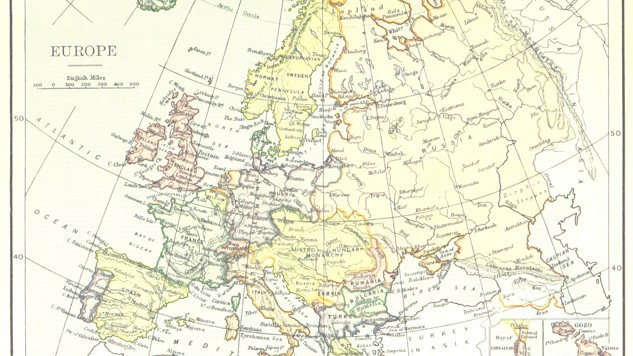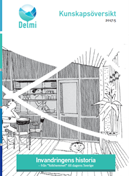In the last two years, the issue of migration has come to dominate the public debate. Depictions of modern migrations are often surrounded by concepts such as crisis and disaster in the current media coverage. There are several reasons why it is important to place today's migration in a historical context. Sweden and large parts of the world is facing the significant challenges that follow in the footsteps of the new migration at the same time as the phenomenon of migration, ie. that people choose or are forced to emigrate is almost synonymous with human history. We have never had a period without migration.
With this overview of knowledge, Delmi wants to contribute to providing a clear picture of what we know about the importance of migration for Sweden's development from a historical perspective. Which groups have come to the geographical area that we today call Sweden? Where did they come from? What knowledge and skills did they bring with them? How were they treated by the locals? What has it been like historically with assimilation and integration? What can we learn from history to better deal with the challenges of today and the future?
Some overall conclusions and recommendations
- The idea that Sweden has historically been a homogeneous country is not true, cultural homogeneity is a consequence of the development during the second half of the 19th century and in the 20th century, with popular movements, democracy and the mass media forming new values and traditions, which we spontaneously experience as Swedish. Before the 20th century, the country housed a number of languages, dialects and cultures that were delimited by social, economic and geographical barriers.
- Four periods of migration stand out in Sweden's history. In the 13th and 14th centuries, among other things, German migration shaped Sweden into an empire. In the 16th and 17th centuries, Sweden was formed into a state with the support of immigration of Finnish peasants, Dutch citizens and German and Walloon blacksmiths. During the 19th century, paradoxically, Sweden had both a large emigration and at the same time migration of workers and investments from abroad. Finally, during the 1950s and 1960s, Sweden became a welfare state, thanks in part to extensive immigration of skilled labor from primarily Finland and southern Europe.
- According to the researcher, there are no historical examples of peaceful immigration having been negative for the recipient country in the long run. The only form of immigration that has been, and is, directly harmful is that of war invasions and / or colonization.
- In a comparative perspective, today's migration differs historically in three ways. The demographic figures are larger today, the country is much richer than ever with the result that today we can afford to be more generous than before in migration reception and finally that globalization has made it possible for migrants from very far away to come to Sweden, something that was not common in the past.
About the author
The research overview, Migration in a historical perspective (2016:1), is written by Dick Harrison, professor of history at Lund University.
Picture by British Library from Unsplash.

